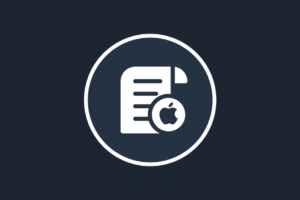Spent $20,000 on a research report only to spin up a landing page, send an email blast, and publish a few press releases?
Unsurprisingly, you barely got any reach or leads for your report.
That’s the old playbook.
These days, B2B companies are taking a social-first approach to distributing their reports, irrespective of their audience.
In this guide, we’ll explain why social media channels are perfect for B2B report distribution and break down examples of distribution done well.
Why social channels are excellent for distributing research reports
Social media includes multiple channels—each of which has the potential to reach billions of users.
As of January 2024, over 5 billion users use different social media channels. Channels like Facebook and YouTube continue to dominate the market with the largest number of monthly active users.
Apart from a large user base, here are a few other reasons this strategy is worth the investment:
Position your brand as an authority
Research reports are a massive investment. Even with a short survey, getting responses from the right audience, analyzing them, and packaging them into an insightful study takes time and effort.
When you do this type of content well, it pays off dividends over time as your audience, which also includes potential customers, starts looking to you as a source of credibility.
Every year, DoorDash for Merchants, an online food delivery platform, creates its Restaurant Online Ordering and Alcohol Trends reports. These reports help restaurant owners plan their capacity based on what consumers want.
Katherine Boyarsky, founder and chief marketing officer of CXD Studio, a content marketing agency, says, “DoorDash for Merchants is a great example of a brand that has nailed repurposing on social media. It doesn’t hurt that food and beverage content is fun to visualize. We’ve worked closely with their content team to think up creative ways to display the data and share key insights with merchants. We’ve also used data from the report in animated ads and animated social posts, and these always perform well.”
Now, the company has become a credible source for restaurant owners—individuals who are the most likely to use its product.
An infographic taken from DoorDash’s 2023 Online Ordering Trends report
Get more eyeballs on your report
Social media forms a massive part of most marketing channels these days.
It’s one of the reasons many B2B companies choose to market or advertise their reports on social media. It lets you reach a broader audience—maximizing your report’s reach. This approach leads to better returns in the long term, mainly if you advertise on the right channel.
For example, 82 percent of B2B marketers see their greatest success on LinkedIn compared to other channels. If you’re publishing an industry-specific report, this would be an excellent channel.
As long as you repackage the data into digestible formats, it’ll pique the interest of the right audience, getting your brand’s name out there.
Increase your report’s lifespan
Another reason ads and press releases act as temporary splashes is that you need a constant influx of investment to keep it running. With social media, that’s not the case.
You can keep picking out the most interesting snippets and repackaging them to keep your brand top of mind.
Plus, as discussions evolve (as they do on social), you’ll have the opportunity to be a part of the conversation—rather than taking a faceless stand.
Higher engagement with the insights
Repurposing reports into formats more conducive to social media engagement, such as short-form videos, polls, and live events, can lead to higher engagement rates. As your audience has a direct channel to converse with you, you’ll cultivate fruitful conversations—and a meaningful following.
When Formstack, a workflow automation tool, published its 2022 State of Digital Maturity report, the team took a social-first approach.
“We engaged thought leaders and influencers to be a part of the report and the launch event. This led to them sharing the report and pulling in more of their audiences,” says Ryan Greives, senior director of brand marketing at Accredible, a digital credentialing platform. “The campaign drove $318k in annual recurring revenue (ARR) attributed pipeline with a 3.24x campaign ROI. This includes $234k ARR in sourced pipeline and 255 sourced opportunities from the event and assessment alone.”
When we asked him about why that approach worked, he explained that:
- Formstack’s audience was interested in the unique data and content
- By bringing in external experts increased the reach and resonance of the report
- Formstack also offered a Digital Maturity assessment tool for benchmarking
This three-pronged approach allowed them to create a deeper connection with their audience while building credibility.
Taking a social-first approach is not just about posting links to your reports. You can create a conversation around your report in several ways.
Here are some of the most compelling ways we’ve seen it done:
1. Do a LinkedIn Live event to discuss the findings
LinkedIn Live events are gaining more popularity as the years pass by. As of 2023, users are scheduling 176 percent more live events year-on-year, according to LinkedIn. And for good reason.
While you delve into the report’s findings, your audience gets to field their questions and get responses in real time. It also allows you to explain the consequences of specific data points in an accessible way—showcasing the team’s expertise at the same time.
For instance, Clearance Jobs, a recruitment platform used LinkedIn Live to discuss the findings from their State of the Security Clearance Process 1H 2024 report. A short 22-minute webinar lets them highlight the most exciting findings and explain what each data point means for their audience—job seekers and recruiters.
2. Share an image with a quote from a subject matter expert
It’s common for companies to collaborate with external and internal subject matter experts (SMEs). The goal is to get their perspectives on the data, see how it aligns with real-world scenarios, and offer solutions accordingly.
When the report is live, share a branded image with the SME’s picture and quote. Send it to them and ask them to promote it via their branded channels—even if it’s not just social media.
This approach increases the perceived value of the report and pulls in a larger audience via partners, contributors, or advisors.
An example of how Formstack used an expert quote to bring awareness to its Digital Maturity report on LinkedIn
3. Create an infographic from your data
The simplest way to share your data? Create an infographic with appropriate data visualizations. These graphics make the content more digestible and lets your audience grasp the core message in seconds.
It’s also an excellent way to get the report cited by others in the industry, and images are easier to share. You can use these graphics to either create zero-click content or drive traffic back to your report’s landing page.
In the example below, we analyzed 1 million YouTube and highlighted the two most asked questions by our audience: best time and best days to post on YouTube. We also asked our readers to check out the full report via the link in our page’s bio to delve deeper.
An infographic from Buffer’s 2024 YouTube posts analysis.
4. Partner with niche influencers
A TopRank Marketing report found that 86 percent of B2B marketers who work with influencers find success in their programs. But it’s also about who they collaborate with. Seventy-seven percent of B2B marketers work with industry experts and analysts to add an air of credibility to their programs.
In hindsight, it makes sense, too. Influencers already have an established following and would have contextual insights to offer. You can bring in their opinions to add a layer of nuance to your findings.
Navattic, an interactive demo platform, leveraged influencers like marketing executives at other B2B software companies to promote their recent report. In the example below, you can see how the expert discusses the top findings and their impact—while encouraging readers to check out the full report.
Navattic partnered with a marketing executive to promote its interactive demo report
5. Write a LinkedIn article or newsletter
Like a blog post, you can unpack your findings in a LinkedIn article. This approach does two things: it turns up in search engines and gets sent as a newsletter to the publisher’s connections.
This approach lets you loop in your existing followers and broaden your reach via search—hitting two birds with one stone.
In the example below, you can see how an industry expert broke down Deloitte’s State of Generative AI in the Enterprise report with their thoughts. It allows them to build credibility in their circle while widening Deloitte’s reach.
Audio content is slowly picking up with content like podcasts and audiograms. If you want to leverage this channel, ask internal experts to record commentary and share them as audiograms.
Audiograms include a background image, an audio recording, and running captions. You can use them on any social media platform to break up the user’s feed.
Simon-Kucher, a business consultancy, uses expert commentary as audiograms to promote its research report
7. Conduct a live discussion in forums
You don’t have to use a social media platform’s audio or video live feature to gain interest. Community forums like Reddit, Discord, Slack, and Twitter are known for the different live chats they do.
Here are a few ways in which you can use those to amplify your report:
- Host an Ask Me Anything (AMA) session on Reddit
- Conduct moderated text-based chats on Discord
- Hold a 30-minute Twitter space for a candid discussion
- Moderate AMA sessions within Slack communities
For instance, Discord servers are common in the developer community. So, use popular Discord servers to reach your audience.
This approach creates a sense of belonging and allows you to identify new angles or interpretations to explore further.
8. Create a video trailer with top findings
Need a single creative that all your employees and partners can share? Use a short video trailer to do that.
Distill hard-hitting statistics and create a storyline using it. It’ll result in a short, visually engaging video that draws in the reader through emotional resonance.
Michele Linn, founder of Mantis Research, a research firm, recommends keeping a running list of data points that:
- Surprise you
- Identify a pain point
- Uncover a missed opportunity
- Highlight a disconnect in thinking
- Make you think of additional questions you wish you’d ask
Use these data points as a guideline to ask more questions. For example, if you come across a pain point, think about what you’d suggest your readers should do. Connect the dots and build the storyline.
It’s an excellent way to use storytelling techniques to draw your audience in and explain the why behind your report. It evokes a sense of intrigue, encouraging them to read the report.
NEW Annual Report 2024 – you can watch the video of the summary of our findings in our Annual Report 2024 available here: https://t.co/wVDOos5iE4 #AnnualReport2024 #SuicidePrevention #MentalHealth pic.twitter.com/PaUxUWADXS
— NCISH (@NCISH_UK) February 8, 2024
National Confidential Inquiry into Suicide and Safety shares a video trailer for its annual report
9. Discuss the methodology using a short-form video
Have you surveyed more than 1,000 customers? Analyzed millions of sales calls? That would make for an even more interesting angle, as your audience would want to know what came out of this analysis.
At Buffer, we do this regularly by analyzing posts from different social media platforms. Similarly, you can use those results to create a short form and discuss how you analyzed the data. For example, publish a Facebook/Instagram Reel or TikTok video and link the report.
This approach increases confidence in the data as your audience can see if you’ve followed the right data analysis process.
10. Host a webinar & post it as a YouTube video
You can host a webinar or podcast and post the recording on your YouTube channel. Like a live discussion or a LinkedIn event, you can invite experts or curate a panel from within your company to explore your findings.
YouTube has its own Live feature, and as of October 2022, it remains one of the most-watched platforms for live streams. So, use it as a way to build distribution into the process.
The Marketing AI Institute conducted a webinar on YouTube to discuss findings from its 2021 State of Marketing AI report
11. Ask your employees to share their perspectives
When employees share the report with their own point of view, it humanizes the data and gives your audience more context behind the study. If you have an employee advocacy program, make content distribution as part of it.
A Refine Labs experiment found that LinkedIn personal pages get 2.75 times more impressions and five times more engagement than a company profile. So, promoting it via your employee’s profile will get you better results.
An employee from Chili Piper, a lead conversion and scheduling app promotes her company’s report on demo form conversion rates via LinkedIn
With research reports, you have an opportunity to create real resonance with your audience. As they crave original content and in-depth insights, it’s time to use proprietary data to fuel your campaigns throughout the year.
As long as you create easy-to-digest visualizations with contextual insights, you’ll achieve maximum impact within the right networks. Use either one of these 11 methods to build out your report campaign and establish your brand’s authority.
And if you’re looking for a social media scheduling tool that’ll help you post cross-channel campaigns, sign up to Buffer for free today.










